A structuring multi-criteria global vision for a sustainable living environment
As early as 1997, the Association HQE defined 14 targets which set the environmental objectives of the HQE approach. These 14 main targets were first organized around two areas: controlling the impacts on the external environment and producing a satisfactory internal environment.
Over the years, and in line with the sustainable development objectives defined by the UN, the members of the Association HQE, professionals wishing to commit themselves to a sustainable living environment, have structured an approach that promotes innovation, in a global multi-criteria vision, based on HQE reference frameworks structured around 4 inseparable commitments:
- Quality of life
- Respect the environment
- Economic performance
- Responsible management
Today, the reference frameworks supported by the France Alliance HQE-GBC concern all building and real estate players, and apply to buildings (new, under renovation, in operation), to the district and its development, infrastructure.
For a sustainable living environment in line with the UN SDGs
To respond to global challenges related to climate change, the United Nations has set goals to achieve a better and more sustainable future for all. These 17 Sustainable Development Goals (SDGs) outline an ambitious roadmap to which the 193 UN Member States have subscribed. A veritable agenda, the SDGs define a common vocabulary, simplify dialogue with stakeholders and stimulate partnerships.
Each player involved in the Alliance HQE-GBC is part of a “Sustainable living environment” approach, aimed at providing concrete responses to the problems of climate change, environmental degradation, prosperity, health and well-being, innovation, development of cities. So many objectives in perfect harmony with the SDGs, translated into the HQE approach around four fundamental and inseparable commitments.
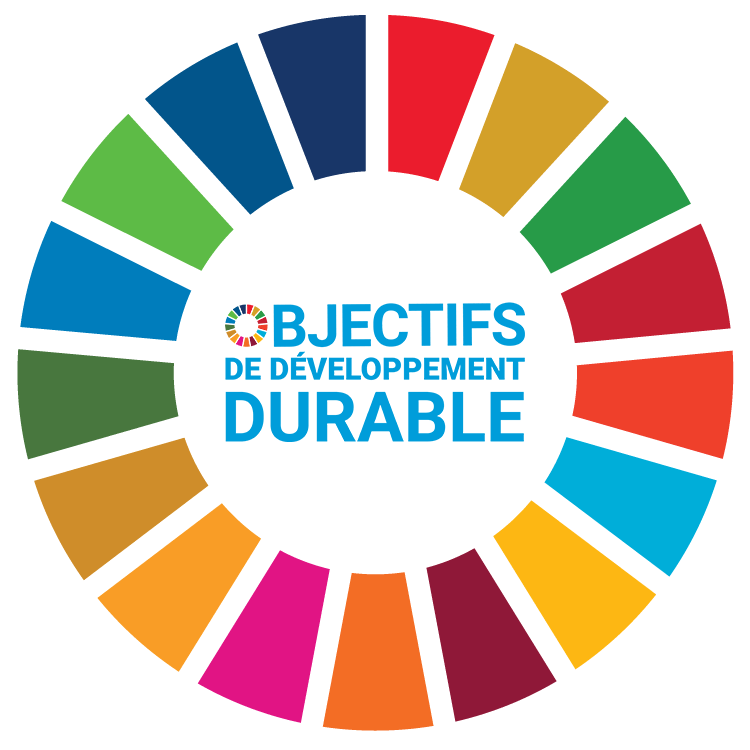
Quality of life
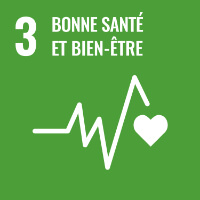
This commitment corresponds mainly to SDG 3 “Good health and well-being”, the HQE approach placing the person at the heart of “better living”.
The HQE sustainable living framework identifies targeted objectives to improve the quality of life.
- Of the occupant of a building
- Safer and healthier places to live
- Pleasant, practical and comfortable spaces,
- Services that facilitate living well together
- Of the infrastructure user
- Atmosphere and social cohesion (spaces contributing to social equity and promoting social interactions)
- Adaptability and sustainability of the infrastructure
- Health and pollution control
- Space comfort
- Landscape, heritage and identity
- Or the inhabitant of a developed neighborhood
- living well together
- mobility and accessibility
- health and comfort
- landscape, heritage and identity
- resilience, security, safety
This commitment, in particular for the user of infrastructures and the inhabitants of a district, is also based on SDG 11 “Sustainable cities and communities”, to think of the city in a sustainable and desirable way:
- By ensuring the integration and coherence of the district with the urban fabric and the other scales of the territory,
- By preserving natural resources and promoting the environmental and health quality of the development,
- By promoting a local social life that brings economic dynamics.
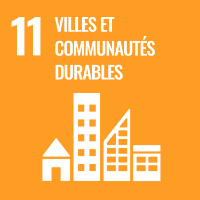
“Anticipating, sharing experiences, promoting performance in sustainable development”: this is the triptych on which the Alliance HQE-GBC’s actions are based. For more than 25 years now, the Alliance has been working with real estate and development professionals to develop best practices for more efficient structures, using a global, multi-criteria approach.
The UN SDGs in favor of respect for the environment are reflected in the HQE approach by three major objectives:
- Energy and Natural Resource Management
- Limitation of pollution and fight against climate change
- Preservation of nature and biodiversity
Respect the environment
To make respect for the environment a major commitment, the HQE sustainable living framework identifies three objectives consistent with several SDGs:
- For the building
- Reasoned use of energy and natural resources
- Limiting pollution and combating climate change
- Consideration of nature and biodiversity
- For infrastructure
- Preservation of natural environments and ecosystems
- Water Management
- Reduction of the environmental impacts of construction materials and equipment, management/recovery of polluted land and management of activity waste
- Energy management, limitation of energy consumption and GHG emissions related to traffic
- For urban planning
- Energy and climate (energy production and storage, renewable and recovered energies, limitation and compensation of GHGs, etc.)
- Water (water savings, management and protection of the water cycle, management of rainwater and gray water, etc.)
- Resources and waste (prevention and management of construction and user waste, environmental choice of products and services, etc.)
- Pollution (air, water, soil)
- Nature and biodiversity (nature in the city, preservation/reconstruction of ecosystems, ecological continuity, etc.)
The fields covered by the Respect for the environment commitment of the HQE approach are mainly based on:
“Anticipating, sharing experiences, promoting performance in sustainable development”: this is the triptych on which the Alliance HQE-GBC’s actions are based. For more than 25 years now, the Alliance has been working with real estate and development professionals to develop best practices for more efficient structures, using a global, multi-criteria approach.
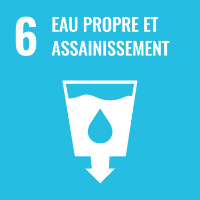
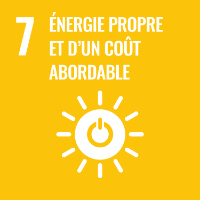
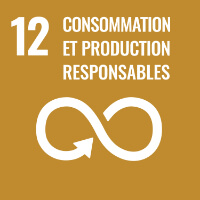
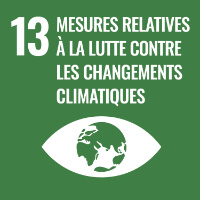
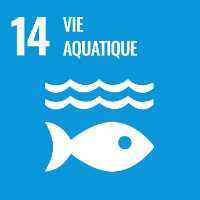
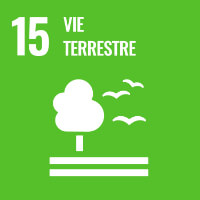
- SDG 6 “Clean water and sanitation”: the various HQE standards include network management, limitation of drinking water consumption, management of rainwater and gray water, etc.,
- SDG 7 “Clean and affordable energy”: HQE standards include energy efficiency criteria that anticipate regulatory changes,
- SDG 12 “Responsible Consumption and Production”: sustainable buildings and facilities save resources, reduce waste and promote circular economy approaches (short loops, reuse, reuse, recycling)
- SDG 13 “Measures relating to the fight against climate change”: the HQE approach contributes to reducing the carbon footprint of structures, with eco-design becoming the preferred way to limit greenhouse gas emissions greenhouse over the entire life cycle of the structure to combat climate change. To prevent the risks associated with climatic hazards, the HQE approach deals with the resilience of buildings and cities, i.e. their ability to absorb a disturbance and regain their operating capacities after extreme phenomena (heat wave, flooding, storm…)
- SDGs 14 “Life on land” and 15 “Life on land”: respecting the environment means taking into account the nature that surrounds us and biodiversity. The HQE approach, both for the building and for the facilities and infrastructures, promotes the reception of biodiversity and living things (animal and plant).
The UN SDGs in favor of respect for the environment are reflected in the HQE approach by three major objectives:
- Energy and Natural Resource Management
- Limitation of pollution and fight against climate change
- Preservation of nature and biodiversity
Economic performance
The economic pillar is inseparable from the sustainable development approach. The HQE sustainable living environment reflects this commitment to economic performance:
- For the building
- Optimization of loads and costs
- Improved asset, financial and use value
- Contribution to the dynamism and development of territories
- For infrastructure
- Savings and long-term cost
- Resilience and risk management
- Contribution to the dynamism and development of territories
- For urban planning
- Savings and long-term cost
- Dynamism and development of the territory
- Services and productive function
- Adaptability and scalability
This “Economic performance” commitment is in line with the SDGs defined by the UN, in particular:

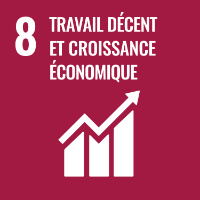
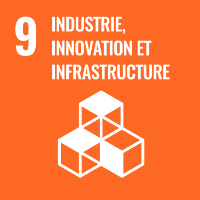
- SDG 7 “Clean and affordable energy”: to reduce energy consumption, and therefore their cost, it is necessary to both build new low-consumption buildings and renovate the existing stock
- SDG 8 “Decent work and economic growth”: sustainable construction creates value: green value, use value, intangible value, productive efficiency… The economic, financial and intangible benefits associated with more sustainable and responsible real estate are many. This commitment has three objectives: the optimization of expenses and costs, the improvement of the heritage, financial and use value and the contribution to the dynamism and development of the territories.
- SDG 9 “Industry, innovation and infrastructure”: the performance-based approach to sustainable construction and the development of digital technology make it possible to better measure and control the performance of a building in operation.
The UN SDGs in favor of economic performance are reflected in the HQE approach by three major objectives:
- Optimization of charges and costs
- Improving the value in use, the resilience of structures and territories
- The contribution to the dynamism and development of the territories
Responsible management
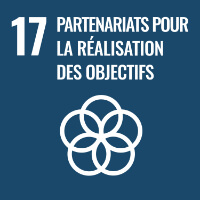
Responsible management makes it possible to involve all the stakeholders in a construction or development project. Its process questions the sustainable development policy of the project leader, its organization, its resources and the means allocated to ensure risk control and obtain the expected result. Responsible management forms a solid foundation for the HEQ sustainable living environment and is organized
- For the building
- Organization adapted to the objectives of quality, performance and dialogue
- Steering for a controlled project
- Evaluation guarantees continuous improvement
- For infrastructure
- Synergy and coherence between infrastructure and territories
- Listening to the needs and expectations of interested parties
- Impacts and acceptability of the site
- Land control and negotiations
- For urban planning
- Conduct project
- Governance
- Synergy and consistency with the territories
- Land control
- Innovation and digital integration
This Responsible Management commitment is essentially based on SDG 17 “Partnerships for achieving the goals”.
The UN SDGs in favor of responsible management are reflected in the HQE approach by three major objectives:
- Organization and dialogue
- Governance and steering
- Acceptability and continuous improvement
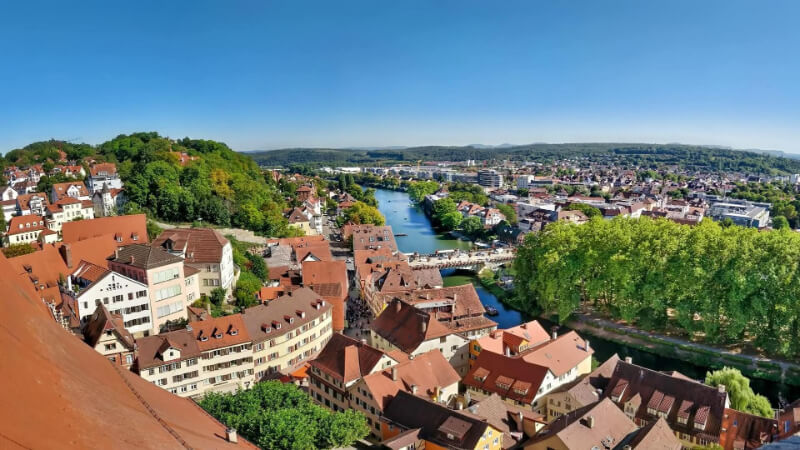
Frame of reference and definition
Go directly to the HQE reference frameworks for sustainable building, development and infrastructure, and to the thematic definition frameworks.
HQE commitments
Building development and infrastructure at all stages of their life cycle – construction, operation, renovation – are at the heart of the DNA of the HQE-GBC alliance and its members, in a transversal vision combining quality of life, respect of the environment, economic performance and responsible management.